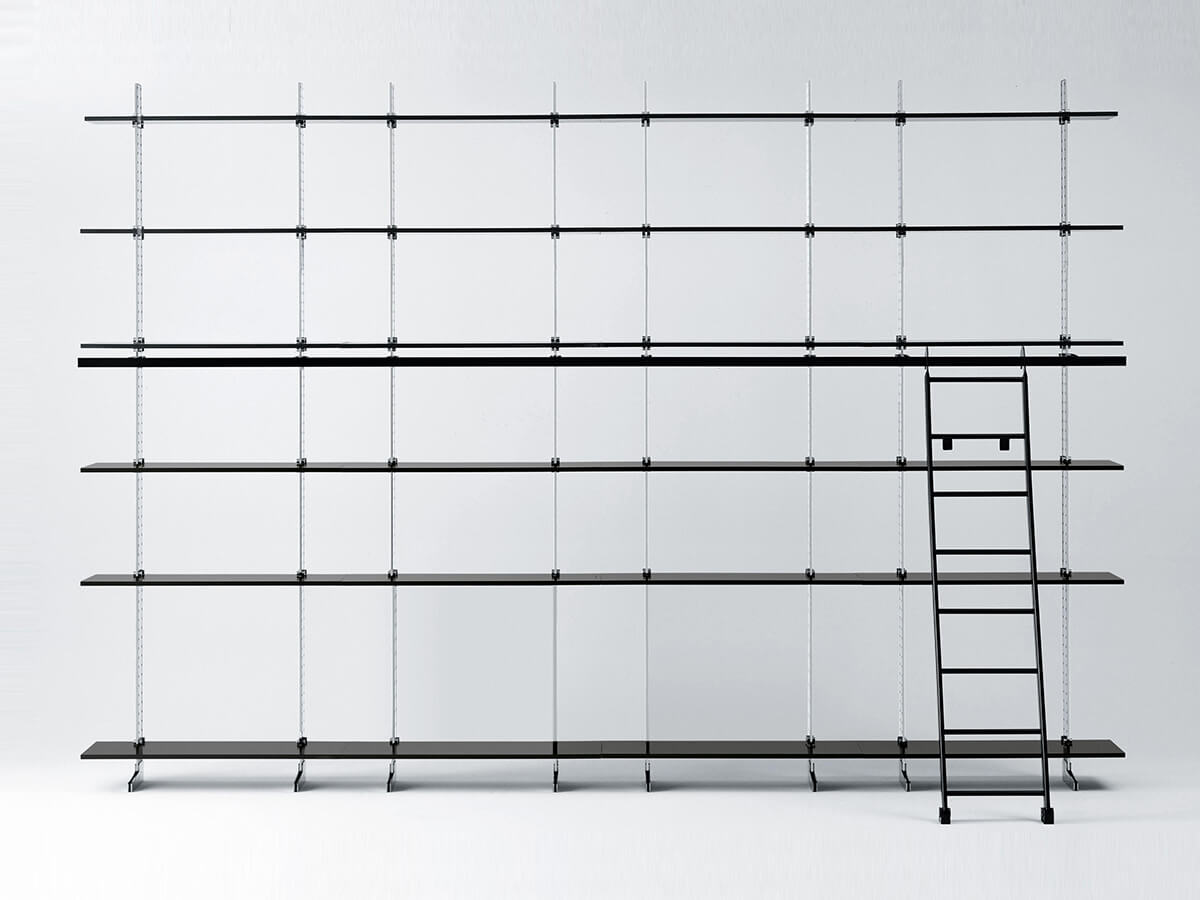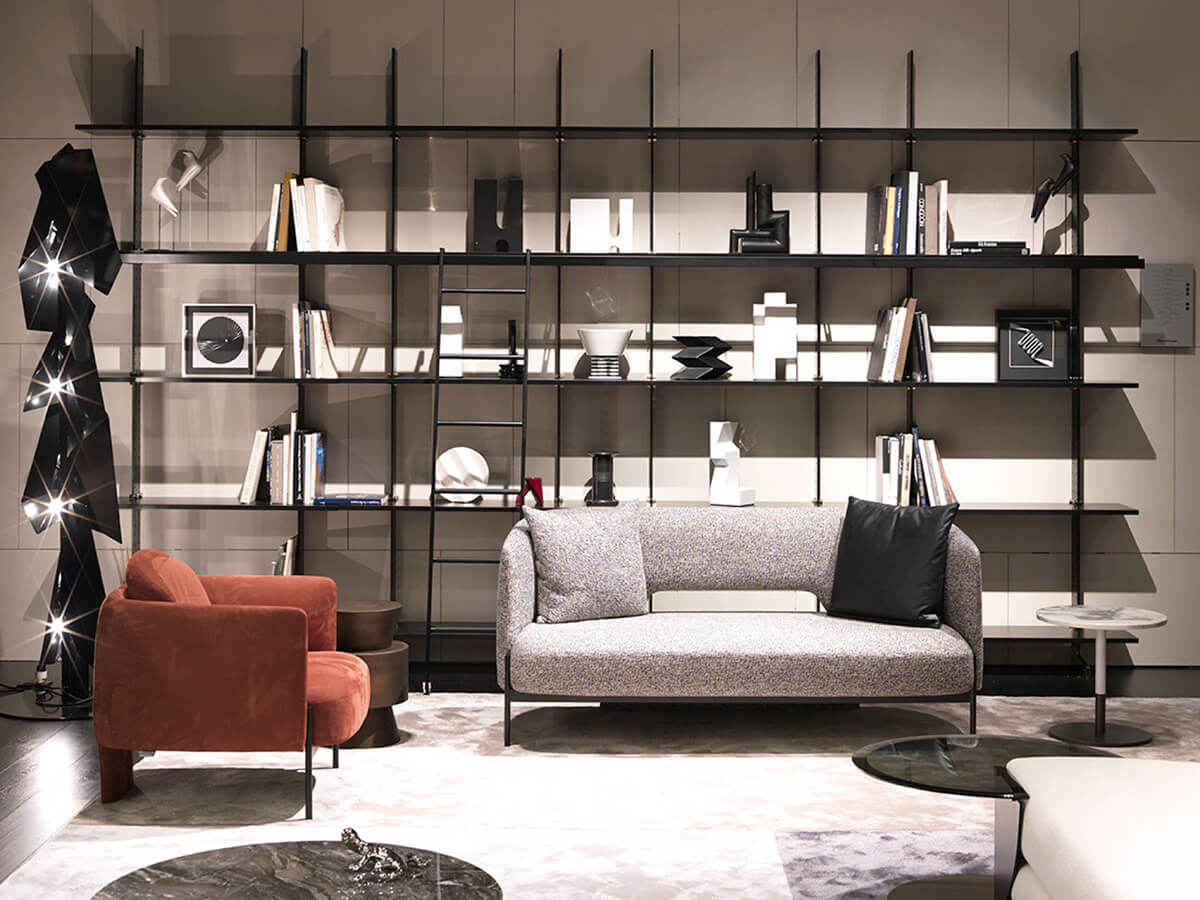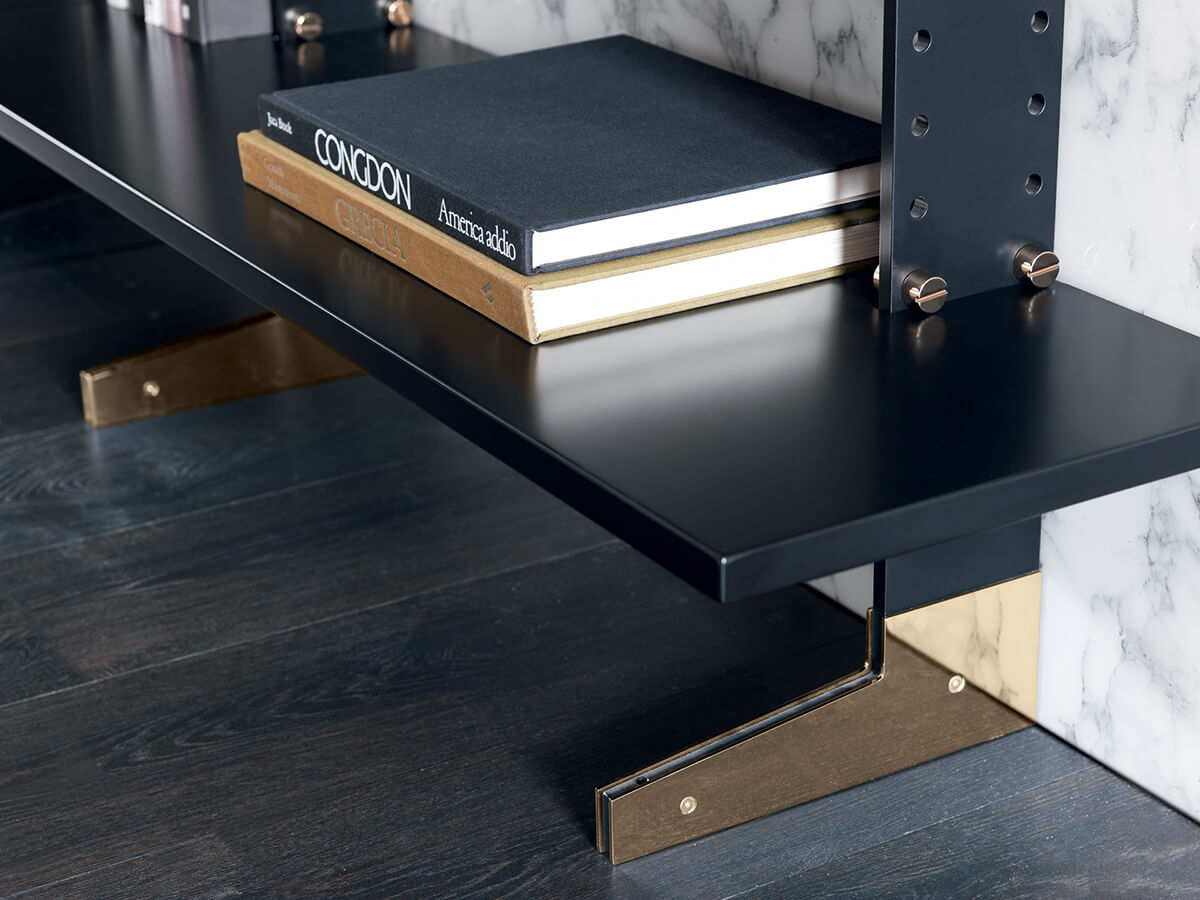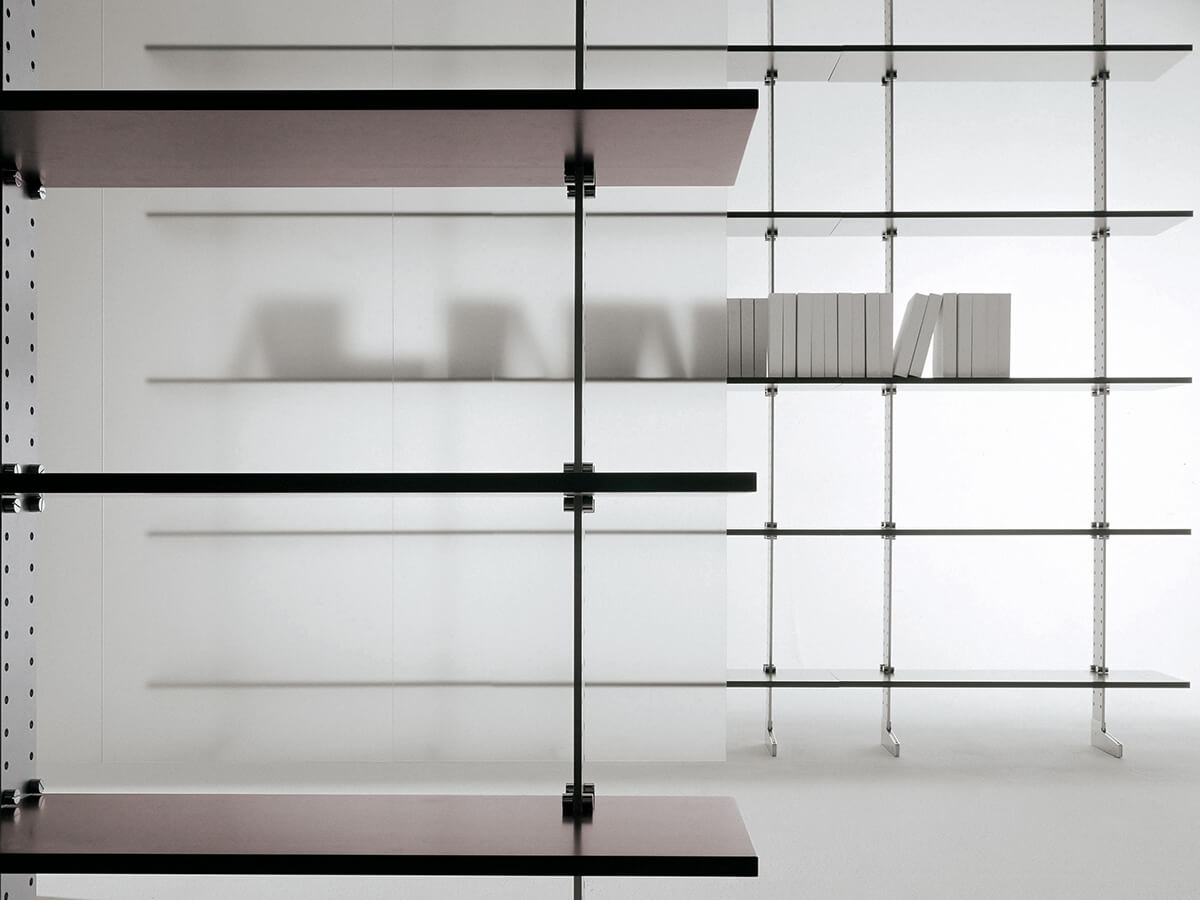Misuraemme
Elegie Bookshelf
A re-edition of a historic 1949 project by Ignazio Gardella, as well as one of the first examples of high modularity at the highest levels. Elegie is a bookcase with a unique taste, perfectly recognizable, capable of placing itself effortlessly in heterogeneous environments. The upright, pre-drilled every 40 mm, is complete with plates and bolts for anchoring to the wall, so as to make Elegie both freestanding and on the wall. The shelves can be used as desks, TV tops or audiovisual equipment both for their generosity and for the solidity guaranteed by the use of drawn steel and fir. A piece of furniture that elegantly occupies living areas as well as studies, halls and bedrooms, according to taste.
Modular bookshelf available in several sizes and compositions
Salvioni Design Solutions delivers all around the world. The assembly service is also available by our teams of specialized workers.
Each product is tailor-made for the personal taste and indications of the customer in a customized finish and that is why the production time may vary according to the chosen product.
To discover the full range of services available, visit our delivery page.
Personalize your request
Uprights Height
Select
Shelves Finishing
Select
Ladder (Optional)
Select
MisuraEmme is a company that has its roots in the centuries-old craft tradition of Brianza. Throughout its long history, which began in 1902 with the foundation by the Mascheroni family, it has played a leading role in the vicissitudes of Italian design. In the years of industrialization, it has become important as one of the spearheads of the world of Made in Italy furniture, thanks to its factory of over 35,000 square meters in Mariano Comense which has guaranteed a productive force with few equals. In more recent years the brand has also distinguished itself for its marked environmental sensitivity, acquiring ecological painting systems.Read more
Designed by
Ignazio Gardella
Ignazio Gardella (1905-1999) was one of the great Italian architects of the twentieth century. A versatile and impeccable professional, he has often played the role of liaison between field practice and academic theory, carried forward in almost thirty years of academic teaching at the IUAV in Venice. He began his career in the 1930s by inscribing himself in the current of Italian Rationalism, with iconic creations such as the anti-tubercular clinic in Alessandria. Gradually his design language becomes richer and is also linked to the experiences of Lombard neoclassicism, allowing him in the post-war period to give life to works such as the Olivetti canteen in Ivrea, the PAC in Milan (which he would later reconstruct exactly as it was in the 90, after it was destroyed in a mafia attack) or the Casa delle Zattere in Venice, his most celebrated but also the most discussed work. His contribution to the world of design passed through Azucena, which he founded in 1947 together with Luigi Caccia Dominioni and Corrado Corradi Dell'Acqua with the aim of putting their furniture into production. Some of his furnishings are now re-proposed by Molteni & C., MisuraEmme and Santa&Cole, while his lamps are re-edited by Tato Italia.
Read more









